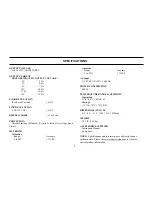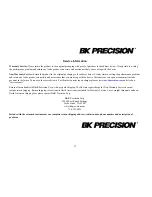
11
OPERATING INSTRUCTIONS
CURRENT LIMITING
Overload (Foldback) current limiting gives protection against
excessive overload and short circuit output. When an overload
(foldback) condition exists, the unit drops out of voltage regulation and
the OVERLOAD indicator will be illuminated. The foldback
characteristic shown in the graph in Fig. 3 takes effect before the
primary fuse blows, dropping the output voltage and current in
proportion to the degree of overload. If the output is short-circuited
(maximum overload condition), the output current drops below its
rating at 3V. Monitoring the output voltage and current will detect any
such overload conditions.
CONNECTING TWO SUPPLIES IN SERIES
(Refer to Fig. 4)
The outputs of two supplies may be connected in series to
provide a variable 6-to-28 volts output. The maximum output
current will remain at 12 amps. See Fig. 4 for the connection
scheme.
The voltage is controlled by both VOLTAGE controls and is
equal to the sum of the two V meter readings. Adjust voltage
so that each power supply provides about half the total voltage.
CONNECTING TWO SUPPLIES IN PARALLEL
(Refer to Fig. 5)
The outputs of two Model 1686 power supplies may be
connected in parallel to double the current capacity to 24
amperes. The output voltage remains at 3-to-14 volts output.
See Fig. 5 for the connection scheme.
The voltage level of both VOLTAGE controls should be set
simultaneously to the same value. Fine adjust the VOLTAGE
controls for equal readings on the A meters. This will allow
each power supply to provide one-half of the total current.
Current will be equal to the sum of both A meters. Current
limiting resistors are not required since hook-up wire
resistance will provide sufficient isolation.






































